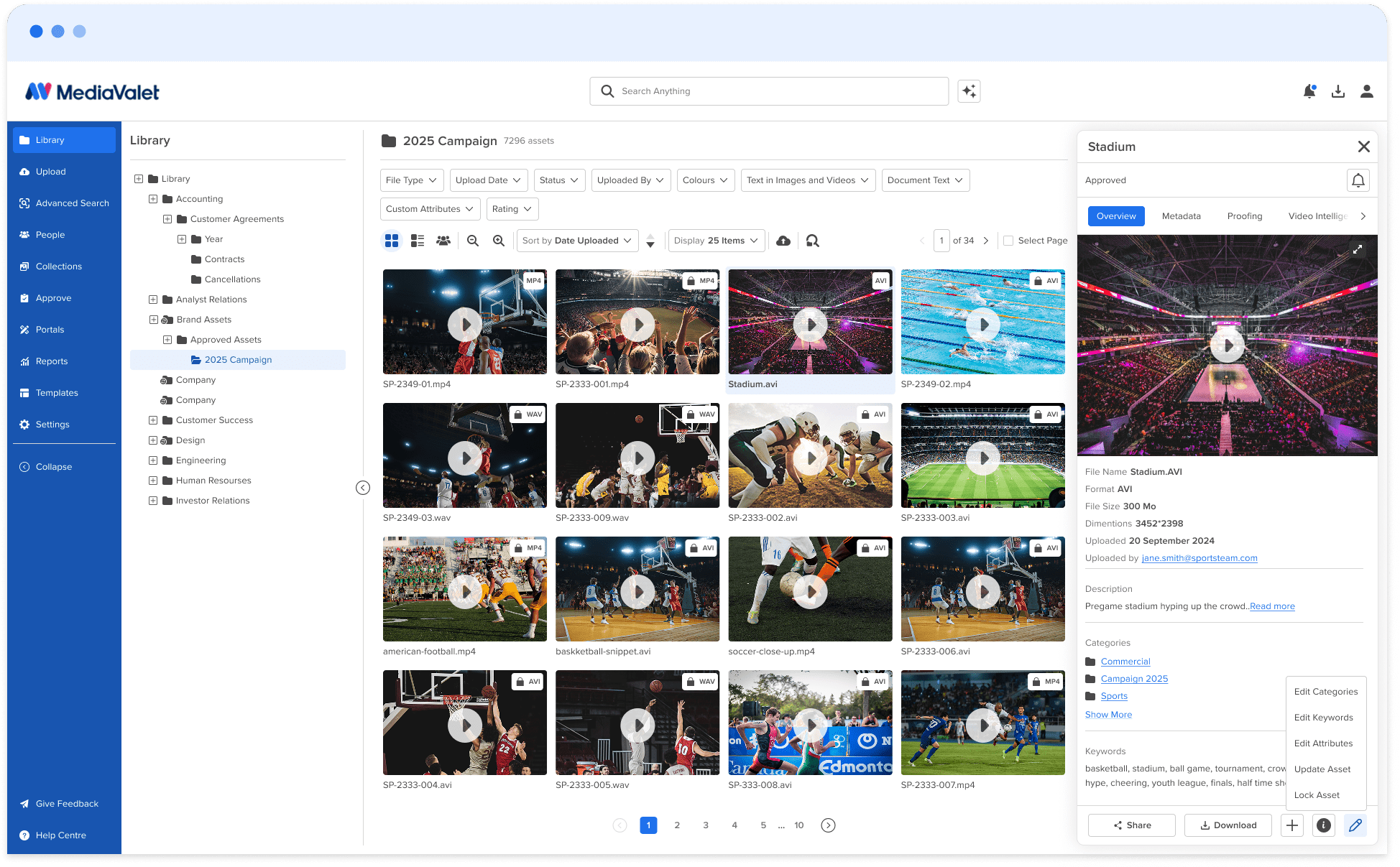The past years have seen an unprecedented demand for video content. A study from HubSpot even found that 54% of consumers want to see more videos from the brands they follow. With more consumers wanting – and expecting – video content, there’s been a rise in the number of businesses investing heavily in video. Creating video content is one thing, but managing it afterwards has been known to bring a set of challenges, specifically around sharing and ensuring discoverability.
It’s crucial that businesses tackle this challenge today in order to continue to scale and achieve their campaign goals – while keeping their videos organized and accessible to their users. In this post, we’ll cover the benefits of using digital asset management to help manage their videos, and highlight some best practices and considerations for managing your own videos within a DAM.
Benefits of Managing Video Content in a DAM
Instant Previews
Users can play videos in full-screen to easily check if it’s the video they need before downloading or even just refer to the information without needing to download it. Each video also has a thumbnail preview, similar to your images and PDFs, for quick reference.
Easy Searching
Categories, auto-tags and other metadata can be easily added to your videos to increase their discoverability. This means that your users can find the videos they need just as quickly as an image or document using the search bar or Advanced Search.
Quick Renditions
With DAM, there are more sharing and distribution options in comparison to other platforms. Users can share videos in web galleries, zipped files, lightboxes and more. And if needed, the user can share the video file in a different format – for example, an MP4 can be shared as a MOV, FLV, AVI or MPEG. Similarly, they can also share and download the video in customized dimensions – all in-app and without any extra work.

Best Practices and Considerations
Make use of custom attributes and embedded metadata
Users can search against any values in your custom attributes and embedded metadata to find the file they’re looking for. With that being said, it’s important to create custom attributes that hold searchable information that’s relevant to your users, so they’re able to quickly and efficiently find the files they’re looking for.
Your custom attributes also act as a filtering system within Advanced Search. If you create a number of custom attributes your users can select and deselect, it can help them narrow down the batch of videos they need and, ultimately, enhance discoverability.
Be descriptive with your video tags
Unlike image assets, videos are complex and can include multiple elements – like products, people, themes, and objects – so it’s best to include this information somewhere in your metadata to help your users understand the file better.
Whether you include these tags in your system attributes, custom attributes or keywords is up to you and what works best for your DAM set-up, but it’s valuable to put it somewhere your users know to look to gather context about files.
Have a specific file naming convention for video assets
A proper file naming convention can help users understand the file, enable organization, and enhance consistency amongst the user experience. The elements you include in your file names or file titles should be specific to your organization, but popular elements include the project name, whether it’s meant for internal or external use and a general descriptor of what the video is about.
Only upload the highest resolution file
Your users will be able to download and share video renditions in multiple formats and sizes. With this in mind, only the most high-resolution version of a video needs to be uploaded to the DAM. This not only saves a significant amount of storage space, it also saves uploaders time, as they only need to upload the video once.

MediaValet’s advanced video management capabilities help leading organizations make the most of their high-value videos. Learn more about how you can scale your video content strategy with DAM.
Related Articles
What a DAM good read!
Fuel your DAM knowledge by browsing our Resource library




